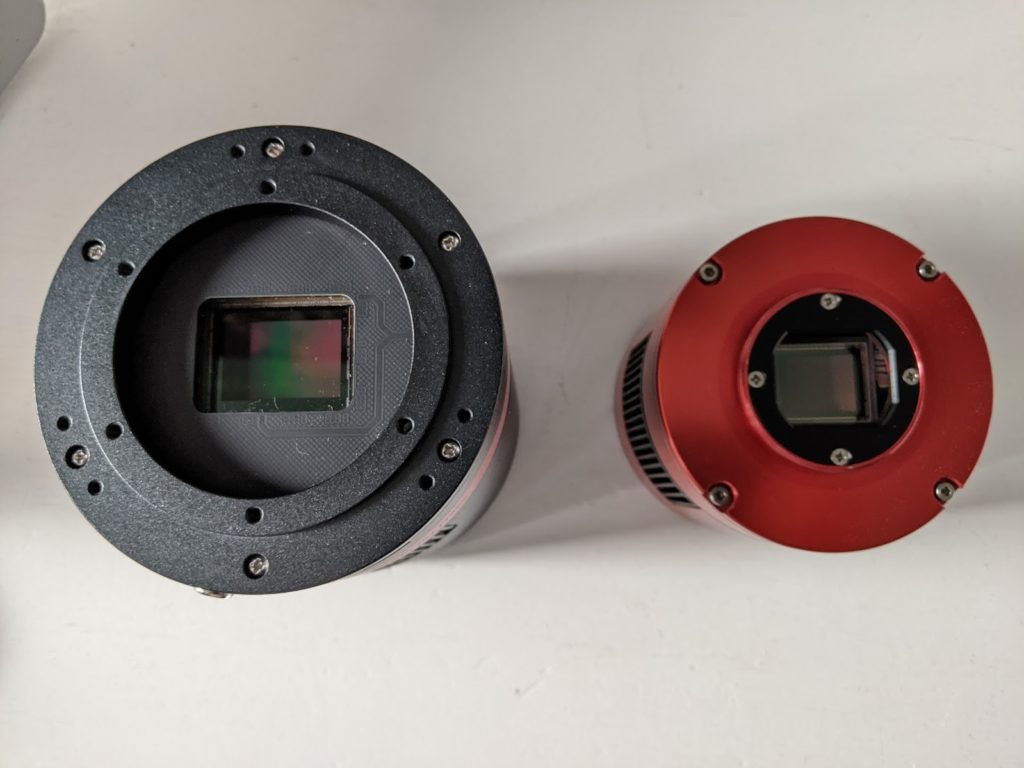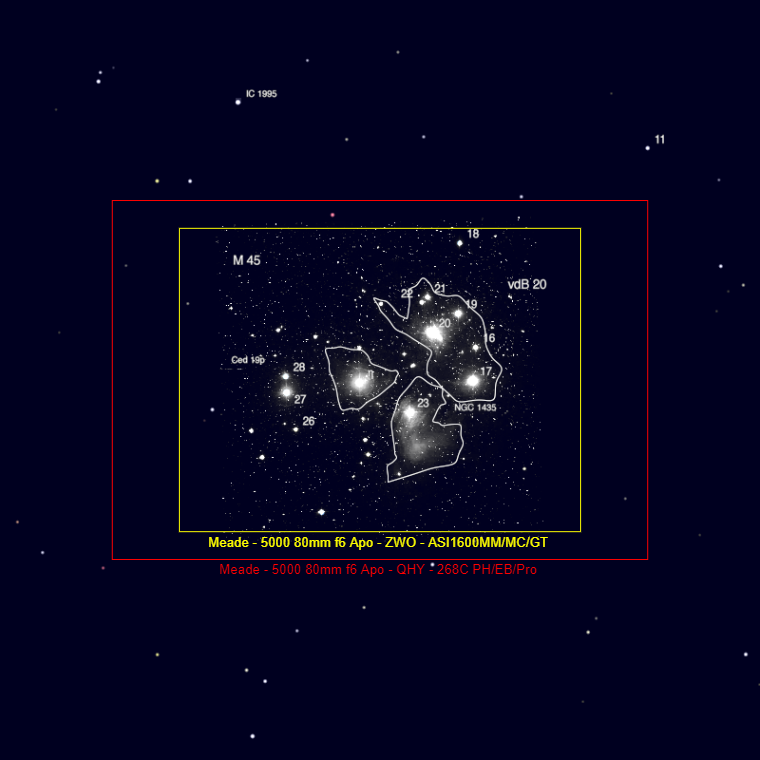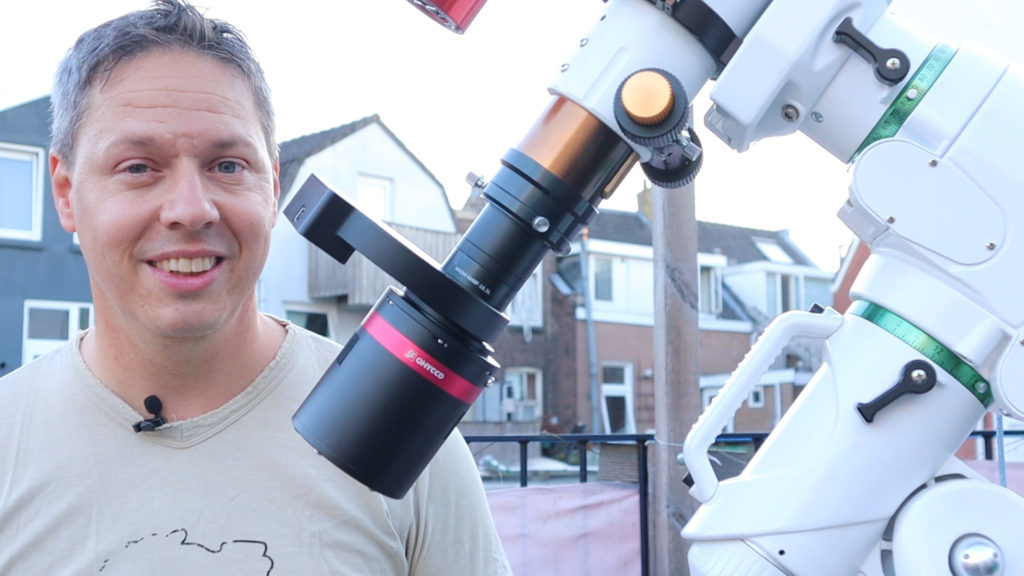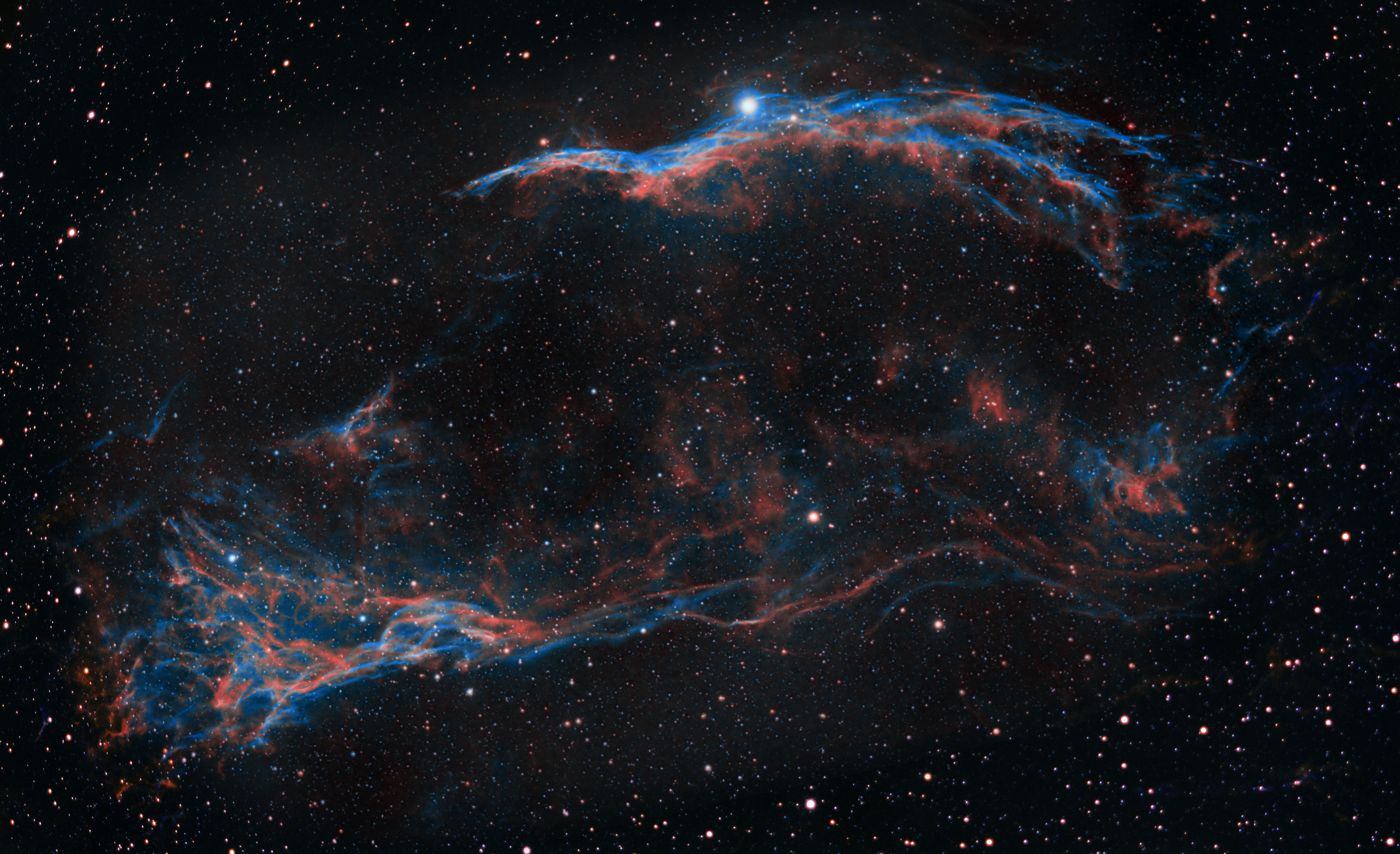Do you want to settle for nothing less than a high-end consumer camera with a huge sensor to make fantastic images of the night sky? If yes, then the QHY268M might just be the camera for you. For the mere price of $2400, you’ll be a proud owner of an amazing astro camera with a 26 Megapixel Sony IMX sensor (6280 x 4210 pixels), 80% Quantum efficiency, low read noise, and a huge 51K full-well depth. If you’re able and willing to invest in this masterpiece of technology, you’ll be amazed by the astro images you’ll be able to make when taking a few tips into account which I’ll mention below.
QHYCCD was very kind to send me their latest QHY268M camera for testing. To be clear, I’m not receiving any financial compensation in return, nor do I want to. I want to give my honest opinion on new products that become available on the Astro market. This being said, I was excited to receive this camera, especially after reading the specifications which seem to be “out of this world”. In this blog, I’ll first mention these specifications and I’ll compare the QHY268M to my good old ZWO ASI 1600MM Pro, which has been my workhorse camera for the past couple of years to image the night sky. After this, I’ll also discuss the setup that I’ve used in combination with the QHY268M, as well as my attempt to get a first deep space picture with this camera.
Shooting objects in space with a monochrome camera
Before getting into discussing the specifications, however, I do need to mention that this is a monochrome camera. If you’re unsure about the main differences between shooting in monochrome versus shooting in color, I do have this blog on my website that gets into the main differences. As for me, I love shooting with a monochrome camera. It enables me to block out specific parts of the light spectrum that are heavily affected by light pollution (although this can also be done using a color camera), and it allows me to image deep-sky objects using so-called narrowband filters. Such filters can collect light at very specific wavelengths (mainly hydrogen alpha, sulfer, and oxygen) which really helps to capture the many emission nebulas in deep space. For more information about using filters for astrophotography, check this blog.
Specifications of the QHY268M (vs. ASI1600MM Pro)
Price
Being Dutch, it is only natural that I will get into the price of the QHY268M camera first :-). It’s available in most shops for around $2400 dollars or euros and that puts this camera right into the category of advanced astrophotographers who want to shoot with high-end consumer gear. As a comparison, the ZWO ASI1600MM Pro is available for about half the price at $1250 dollars or euros. So from a cost perspective, a fair question to ask is if the specifications of the QHY268M camera are twice as good as compared to the ASI1600MM pro. Let’s check it out.
Sensor size
The most impressive thing about the QHY268M is its huge sensor size. You’ll be getting a full APS-C format CMOS sensor, equivalent to many DSLR cameras that are on the market today. This is a huge step forward when looking at astrophotography cameras. Just about 5 years ago, you’d be paying in excess of 5K dollars or euros to get such a large sensor that is optimized for astrophotography, so that’s really impressive. The QHY268M has a Sony IMX571 sensor, with a resolution of 26MP at 6280 x 4210 pixels. That’s about 1.6x more than the ASI1600MM pro which is a 16MP camera with 4656×3520 pixels.

Pixel size
The pixel size of the QHY268M is 3.76 mu and that’s almost equivalent to the 3.8 mu pixel size of the ASI1600MM pro. In real life, this means that with the QHY268M, you’ll be able able to capture about 1.5x more sky as compared to the ASI1600MM Pro. Because of this large field of view, the QHY268M camera is ideally suited for taking wide-field pictures with many popular refractors that have a focal length of about 500MM. You’ll be getting an imaging size of about 1.5 arc seconds per pixel and this is ideal if you want to capture some of the larger nebulas in our Milkyway in one picture, without the need to create a mosaic.
You can also use this camera in combination with longer focal length telescopes to capture smaller DSO’s. For example, I could pair the QHY268M camera with my Edge HD 8″. This combination would result in about 0.5 arc second per pixel at 1500MM focal length. The camera also supports binning, so you might want to opt for 2×2 binning, to get about 1 arc second per pixel which is ideal to capture smaller DSO’s as well as potentially interesting objects around such smaller DSO’s.
Below, you can see an example of the Pleiades (M45) – a so-called ‘widefield target’ when pairing the QHY268M camera with a 480mm focal length refractor. The red rectangle represents the field of view you’ll get with the QHY268M as compared to the ASI1600MM Pro in yellow.

Other differences between the QHY268M and my 1600M Pro
There are some other major differences between the QHY268M and the ASI1600M pro in addition to price and sensor size. The QHY268M has a 16 bit ADC as compared to a 12 bit ADC of the ASI1600MM pro. The QHY268M has a higher quantum efficiency of 80% vs. 60% and an impressive full well capacity of 51K versus 20K on the ASI1600MM pro. Of course, the QHY268M can be cooled to -35C below ambient temperature to reduce the noise when taking long-exposure pictures. One final thing I have to mention is that the QHY268M is heavier and larger as compared to the ZWO 1600M Pro. In sum, the QHY268M outperforms the ASI1600MM Pro in all specifications – which of course is to be expected when you are paying twice as much for the QHY268M. Let me now get into my first real-life test I’ve performed with the QHY268M.
First light testing
I decided to first pair the QHY268M with my Teleskop Service 80MM F/6 APO refractor and ZWO filter wheel. I need to mention that this is not an ideal setup. I’ve been using 1.25″ filters up to now, and that filter size works fine with cameras up to 16MP. But for this camera, due to its large sensor size, I would advise you to pair it with 2″ filters to avoid vignetting. Also, the sensor of the QHY268M has a larger back focus as compared to the ZWO cameras, so you should take that into account. If you are serious about buying this camera, I would recommend you’ll also get a QHY filter wheel with the QHY268M. You can connect a QHY filter wheel directly to the camera without the need for an additional adapter I needed to connect the QHY268M to my ZWO filter wheel. A shorter distance from the sensor to the filterwheel can avoid potential vignetting, which I did experience using this setup.

As for my first light picture, I decided to image the Western Veil Nebula. This nebula is part of the famous Cygnus loop and visible in the northern hemisphere from about March until October. I do need to mention that – as nights are short in summertime – I collected only 5h of data in Ha, Sii and Oiii combined. Also, I did experience some vignetting and my back focus wasn’t perfect, leading to oval stars at the very edge of the picture – so I did reduce the image size.

Conclusion
In conclusion, the QHY268M camera seems to be more than up to the task of delivering high-end quality pictures of the night sky. Even without an ideal setup, I managed to take a very decent picture of the Western Veil Nebula. The QHY268M huge sensor size in combination with the high quality 16 bit ADC, 80% QE, and the impressive 51K full well-depth and low-read noise might just be the best quality camera you can buy at this price point. CCD sensors used to rule the high-end consumer astromarket a couple of years ago, but lots of innovation and development on CMOS cameras have resulted in this high-end camera that can rival high quality CCD camera pictures at a more affordable price. Still, at $2400, the QHY268M is of course a serious investment for the average amateur astrophotographer. If you are willing to pay that price, you will be amazed by its capabilities and performance.
The QHY268M is available here at OPT (USA, worldwide)
Click here to view my latest astrophotography gear
Final note
I do need to apologize to my regular YouTube viewers and QHYCCD. I haven’t been posting a lot of videos due to a combination of factors. My work as an assistant professor at my university has been taking up most of my time. And my dad is unfortunately in the hospital. And quite frankly the whole COVID-19 year has been quite challenging for me as I was required to work from home in combination with taking care of my family. Anyway, this year has forced me to take a hard look at my life and I decided to take a step back. I will be resigning from my university in September to spend more time with my family and friends. This probably means that from September onwards, I will have more time to get my YouTube channel and this website back on track so I hope you’ll stay tuned.
I have purchased my mount and telescopes for visual so far. I haven’t purchased any photography equipment to date. I do want to go mono so my question: is the 268M fall between the 1600MM and the 2600MM in specifications? Thank you
Hi Chett,
The 2600MM and the 268M are very similar. Main differences are that the 2600 has a USB hub, and the 268M has a higher imaging buffer (1gb vs. 256mb).
I also think the QHY has a humidity and pressure sensor inside the chamber whereas the ZWO does not, but I’m not sure about that.
All in all, very similar, may come down to your personal preference and the setup you’re currently using… Hope this helps, clear skies!.
Bravo for taking care of your family and doing the things that matter. My wife and I have been hit with disabling health conditions and struggle to take care of each other and our house, a COVID bastion of safety. One saving grace is the backyard observatory, where I can sneak off to after caring for my wife for the day. Of course summer here finds washout conditions and untenable weather, so it has been a long summer.
Two years ago I decided to go the CCD route with an Atik 383L+ monochrome, and the learning curve has been steep, but began to see success at the end of the season. A western trip to Big Bend or such is on the hope list someday.
Take care and keep priorities with your family. They’re more important than pretty pictures or know-it-all-students.
Thanks for your nice words and support Randall, really appreciated! Hope you’ll have some clear skies soon and indeed, family will be on the top of my list from now on.